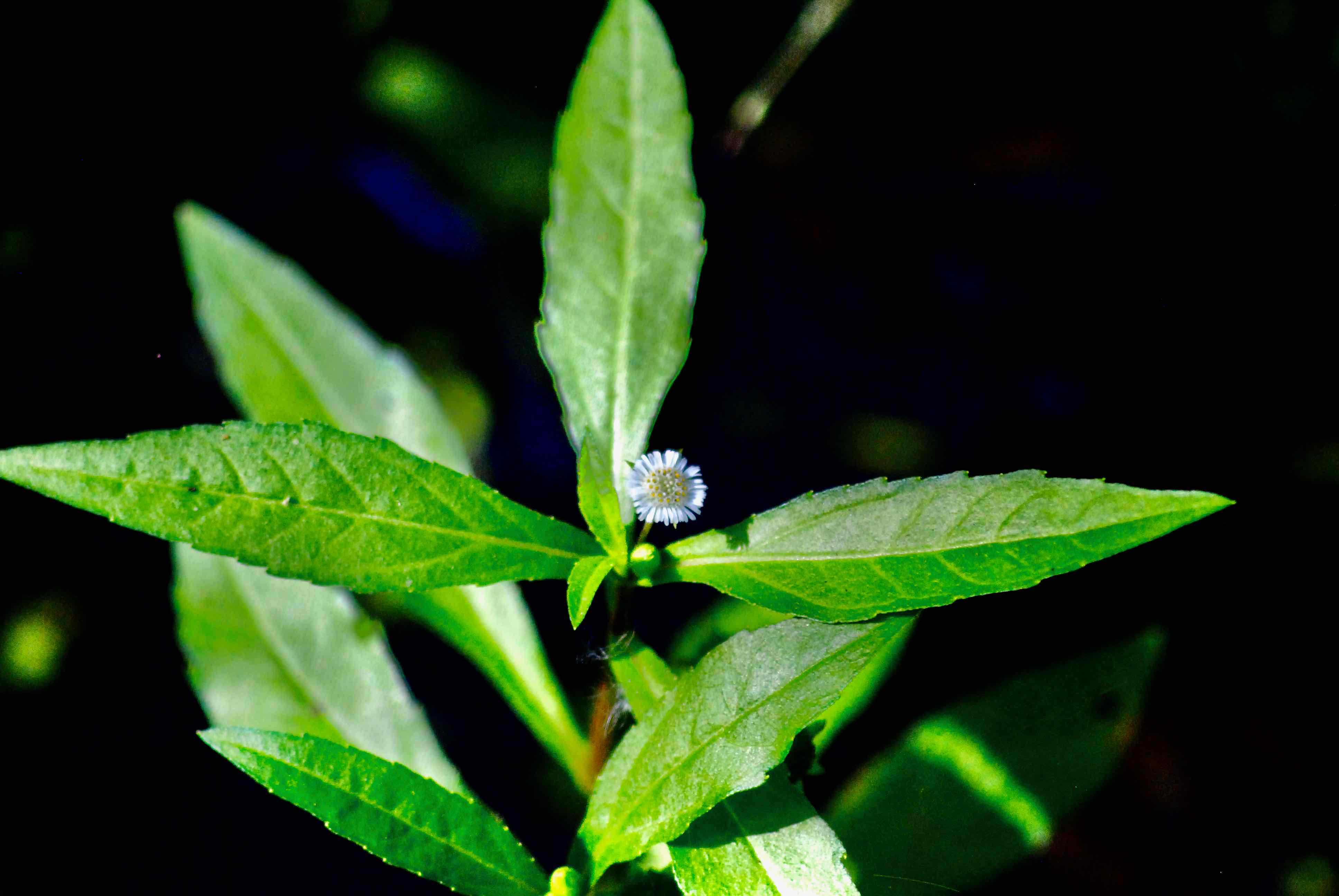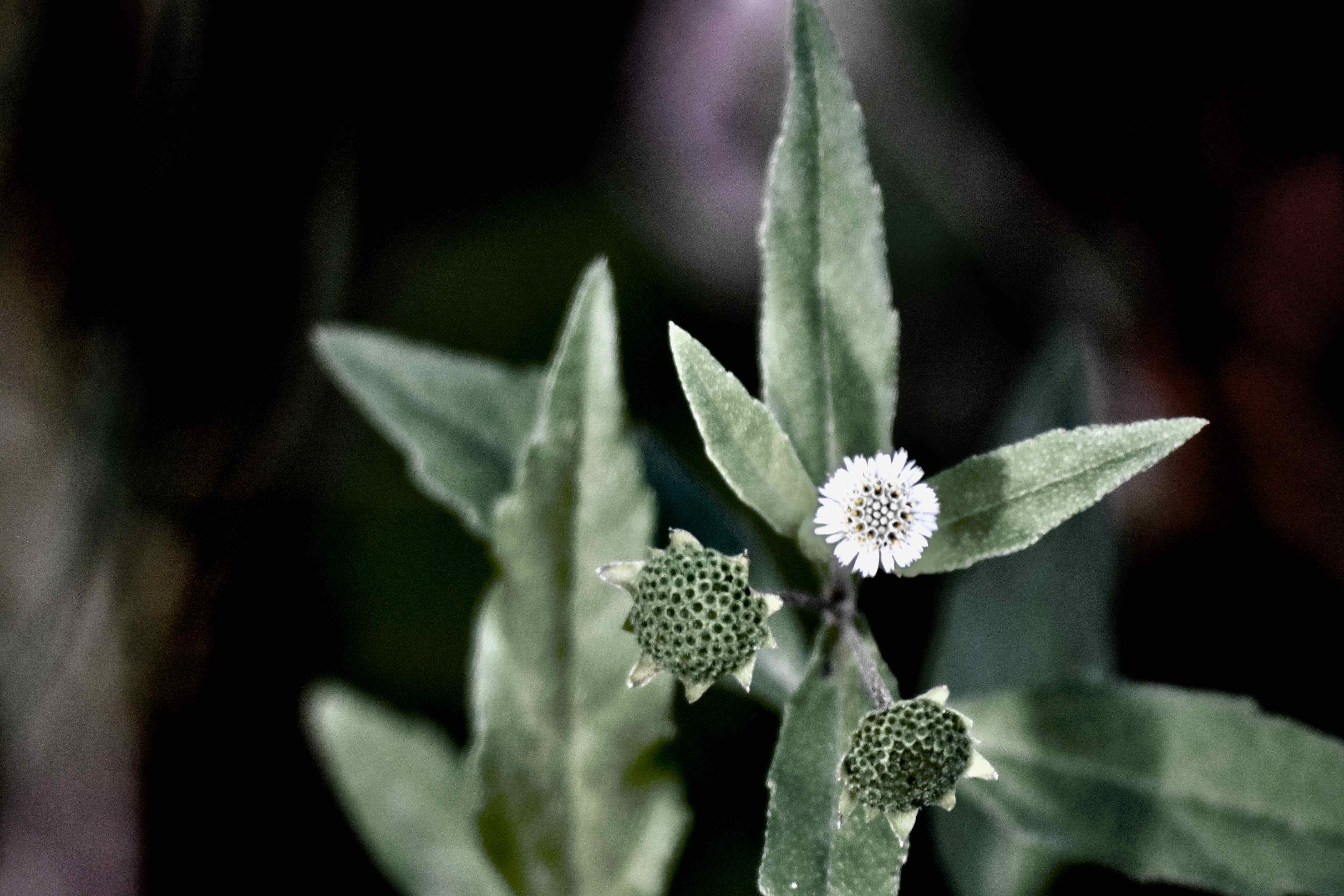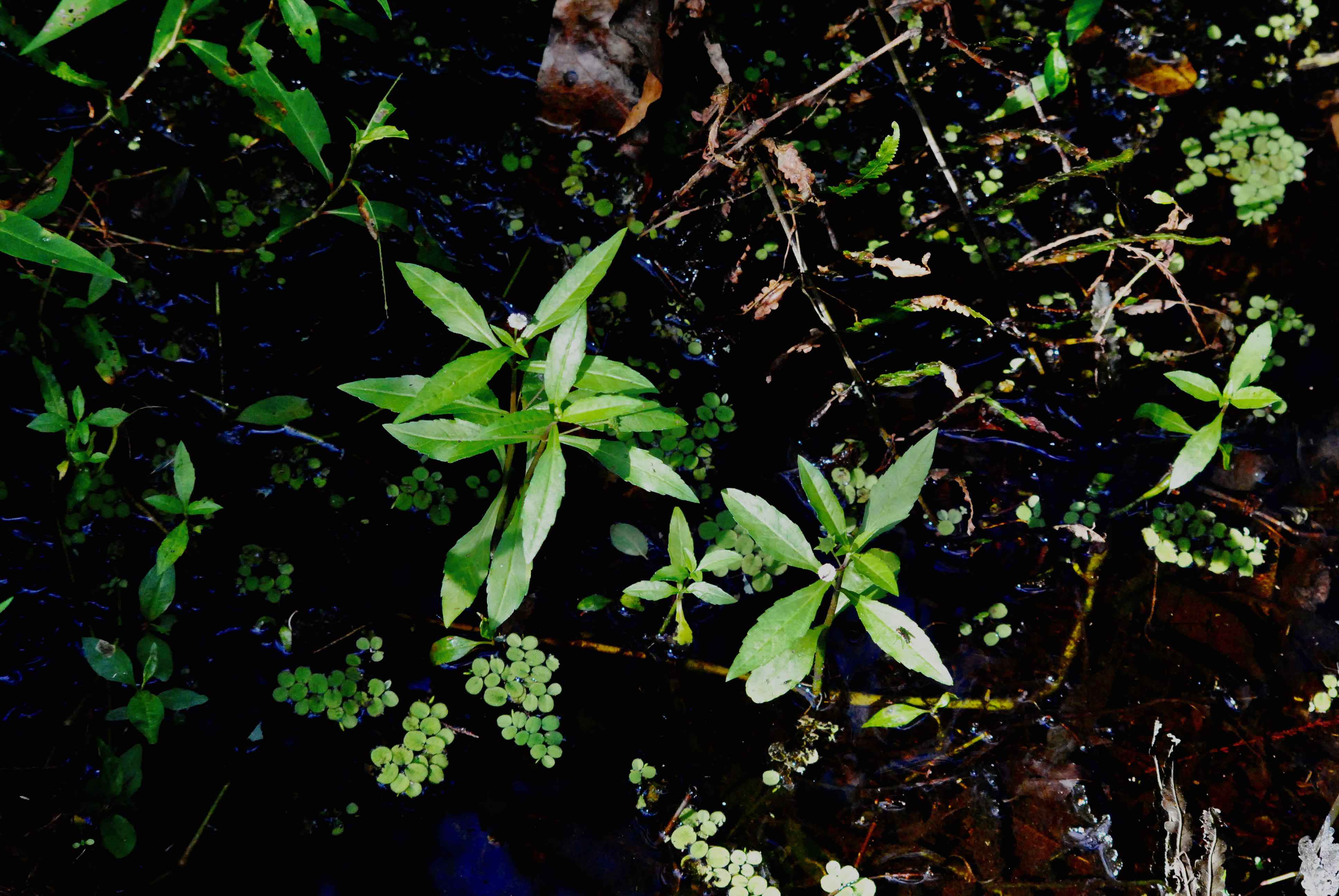
False daisy, photographed at Loxahatchee National Wildlife Refuge, Boynton Beach, Palm Beach County, in January 2015.
False daisy, Eclipta prostrata, is one of those plants that is easily overlooked. The flower is small and its features aren't particularly eye-grabbing. But in parts of the world, it is an extremely important plant.
And if you're losing your hair or prematurely gray, you might want to take note of false daisy.
It is a Florida native, found in most counties. It's found everywhere in South Florida with the exception of mainland Monroe County, although it does grow in the Keys.
It's also native to most of the United States as far north as Minnesota and Massachusetts and as far west as California. It is not found in the Northwest or the Rockies. New York, which calls the plant yerba-de-tago, lists it as endangered, but the false daisy population elsewhere is secure, including Florida.
Ontario, the Caribbean, Mexico, Central America and South America are all part of its naive range but it has spread to Europe, Asia, Africa, Australia and the Pacific Islands.
False daisy grows in wet places — the banks of streams and rivers, marshes, the edges of ponds, lakes and sloughs. We found these plants growing in the cypress swamp at the Loxahatchee National Wildlife Refuge. False daisy is a perennial in warmer parts of its range, like South Florida, an annual farther north. The flower is white and yellow, less than a half-inch in diameter. Leaves grow opposite each other; they can be eliptical in shape or lance-shaped, with fine teeth along the outer edge. The plant can be multi-branched, or not, and a foot or two tall.
In China, false daisy is a staple of traditional herbal medicine and used in myriad ways, including to rejuvenate the liver. In the Philippines, it's used to treat kidney stones. It has antiseptic properties, and is used to dress wounds. It is also said to contain antioxidants and vitamin A, improve the immune system and act as a sedative and pain-reliever.
But probably it's best known as a hair tonic. It is said to promote hair growth and reverse premature gray hair. It supposedly has positive effects on eye brows and mustaches as well. Extracts of false daisy are used in hair oils and shampoos and packaged as powders, juices, capsules and tinctures. The plant is also used to make hair dyes and for tattooing. Now how effective any of this is, we don't know, but there is some scientific evidence backing up a few of the claims. At the least, it's not likely to kill you, since false daisy is edible.
False daisy is a member of Asteraceae, the aster family. Other names: han lian cao (Manderin) and trailing eclipta. Also spelled false-daisy.
Click on photo for larger image
Links for False Daisy



